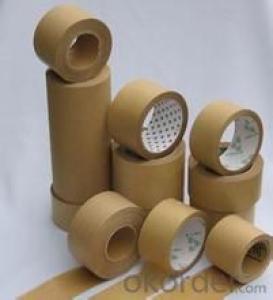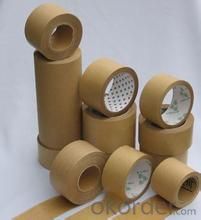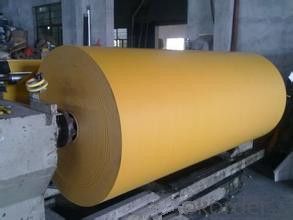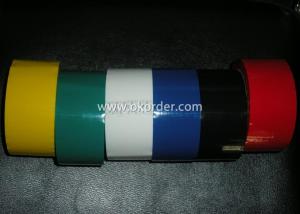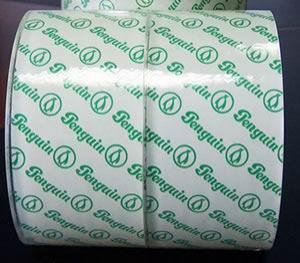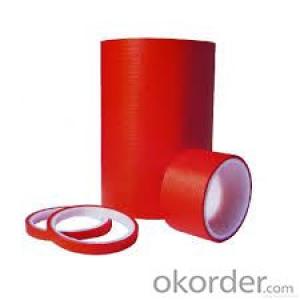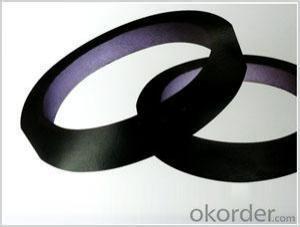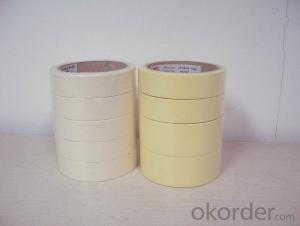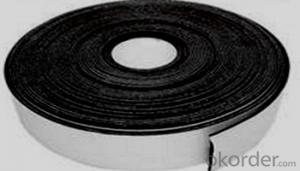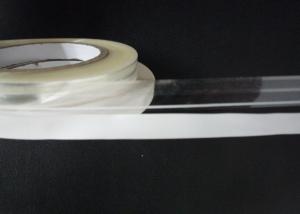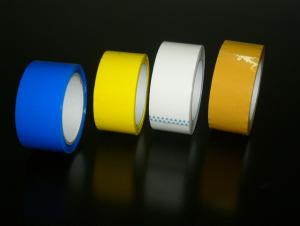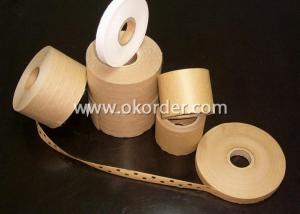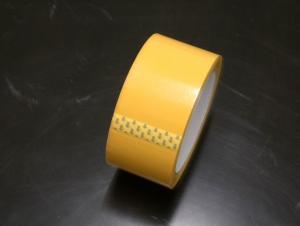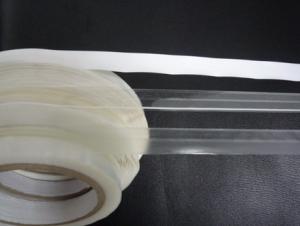Tarte Shape Tape Concealer New Packaging Japanese Flat Paper Yellow Paper Tape with Acrylic Adhesive
- Loading Port:
- China Main Port
- Payment Terms:
- TT OR LC
- Min Order Qty:
- -
- Supply Capability:
- -
OKorder Service Pledge
OKorder Financial Service
You Might Also Like
Packaging & Delivery
Packaging Detail: | 460 X 350 X 360 mm Cartons or Customized size |
Delivery Detail: | 3 to 30 Days up to quantity |
Specifications
NO glue residue auto paint masking paper tape
No Glue Residue Silicone Adhesive Tape
ISO9001 supplier since 2004
Features
1.Kraft Paper Gummed Tape made with kraft paper and rubber adhesive.
2.Excellent adhesion, high tension stress, strong climate adaptability.
3.Environment-friendly, excellent adhesion, writable, printable , non-toxic, tasteless, water-activated, recycle.
4.High quality ,easy to tear.
Application
1.Widely used in carton sealing ,packing, fixing,clothing,shoes industrial.
2.Used for color separation & painting on pin stripes.
3.Used for non-critical masking.
4.Used for painting &spraying.
- Q: What is the difference between acrylic and hot melt adhesive for packaging tape?
- Acrylic and hot melt adhesives are two common types of adhesives used for packaging tape, and they have some key differences. One major difference is the bonding strength. Hot melt adhesive is known for its excellent bonding strength, making it suitable for heavy-duty applications. It creates a strong and durable bond that can withstand rough handling and varying temperatures. On the other hand, acrylic adhesive typically offers a lower bonding strength compared to hot melt adhesive. While it is still suitable for most general packaging needs, it may not be as ideal for heavy or bulky items. Another difference lies in the application process. Hot melt adhesive is applied in a molten state and solidifies upon cooling. It is typically dispensed using a hot melt glue gun or a hot melt applicator. The quick setting time of hot melt adhesive allows for fast packaging operations, making it popular in high-volume settings. In contrast, acrylic adhesive is applied in a liquid form and requires some time to cure and form a strong bond. It can be applied using a hand dispenser or a tape gun, and it usually requires some pressure for optimal adhesion. Additionally, hot melt adhesive offers good adhesion to a wide range of surfaces, including cardboard, plastics, and metals. It is highly versatile and can be used for various packaging materials. Acrylic adhesive also adheres well to different surfaces, but it may not have the same level of compatibility with certain low-energy surfaces, such as polyethylene or polypropylene. Furthermore, temperature resistance is another factor to consider. Hot melt adhesive performs well in both high and low temperatures, maintaining its bonding strength. It can withstand freezing temperatures and heat without compromising its adhesive properties. Acrylic adhesive, while generally offering good temperature resistance, may not be as effective in extreme conditions, particularly at very high or low temperatures. In summary, the main differences between acrylic and hot melt adhesives for packaging tape lie in bonding strength, application process, surface compatibility, and temperature resistance. While hot melt adhesive provides superior bonding strength, fast setting time, and excellent temperature resistance, acrylic adhesive offers versatility, ease of application, and good adhesion to most surfaces. The choice between the two depends on the specific packaging needs, materials, and environmental conditions.
- Q: Is packaging tape easy to cut with scissors?
- Yes, packaging tape is generally easy to cut with scissors. The tape is designed to be easily cut with regular household scissors, making it convenient for various packaging needs. The combination of its thickness and adhesive properties allows for clean and precise cuts, ensuring that the tape can be easily managed and removed when necessary.
- Q: Can packaging tape be used for repairing torn paper?
- No, packaging tape is not suitable for repairing torn paper. It is designed for sealing and securing packages, not for mending torn paper.
- Q: Is packaging tape flammable?
- Packaging tape, in general, does not easily catch fire. The majority of packaging tapes are composed of materials such as polypropylene or polyester, which possess elevated melting points and are highly flame-resistant. Nevertheless, it is crucial to acknowledge that the adhesive utilized on the tape can differ depending on the specific brand and type. Certain adhesive compositions may contain elements that are flammable; however, these elements are typically found in minuscule quantities and are improbable to pose a significant risk of causing a fire. Nevertheless, it is always advisable to adhere to the manufacturer's instructions and maintain a safe distance between packaging tapes and open flames or potential ignition sources to ensure one's safety.
- Q: How do I prevent packaging tape from losing its color over time?
- Here are a few strategies you can try to prevent packaging tape from losing its color over time: 1. Properly store the tape: To maintain its color for longer, keep your packaging tape in a cool, dark, and dry place, away from sunlight and extreme temperatures. 2. Avoid moisture: Moisture can damage the adhesive and color of the tape, so store it away from areas prone to water leaks or high humidity levels. 3. Opt for high-quality tape: Look for packaging tapes made with better quality materials that are designed to retain color for a longer period. 4. Minimize exposure to air: After use, seal the packaging tape tightly to reduce its exposure to oxygen, which can contribute to color degradation. 5. Handle with care: Rough handling can cause the color to rub off or fade faster, so be gentle when applying and removing the tape. 6. Consider protective coatings: If the packaging tape is important for branding or aesthetic purposes, you can explore using protective coatings or laminates to add an extra layer of protection against color loss. By implementing these measures, you can extend the lifespan and vibrancy of your packaging tape, ensuring it remains visually appealing for a longer period of time.
- Q: Can packaging tape be used on different materials?
- Indeed, various materials can be affixed with packaging tape. Packaging tape exhibits versatility as it can adhere to a broad spectrum of surfaces, encompassing cardboard, plastic, metal, glass, and even fabric. Its primary purpose is to yield a robust and steadfast seal, guaranteeing the preservation of packages throughout their journey and storage. Whether one aims to seal a cardboard box, consolidate multiple items, or fasten a package, packaging tape proves to be an efficacious option for an array of materials.
- Q: Can packaging tape be recycled?
- Packaging tape can indeed be recycled, but its recyclability depends on the type of tape and the recycling facilities in your area. The commonly used clear or brown polypropylene tape, for example, cannot be recycled along with regular paper or plastic waste. However, certain recycling centers do accept specific types of tapes for recycling, such as those made from paper or with water-based adhesives. It's crucial to contact your local recycling center to determine their policy on packaging tape recycling and any specific requirements they may have. Furthermore, taking the tape off cardboard boxes before recycling them can enhance the recycling process. If recycling is not feasible, it is recommended to either reuse the packaging tape or dispose of it properly in the regular trash.
- Q: Is packaging tape resistant to moisture or humidity?
- Indeed, packaging tape typically exhibits resistance to moisture and humidity. The majority of packaging tapes incorporate materials like polypropylene or acrylic, renowned for their capacity to endure moisture and humidity. These tapes are purposefully crafted to establish a robust seal on boxes and packages, effectively thwarting the infiltration of water or moisture. Furthermore, packaging tapes frequently boast an adhesive that is meticulously formulated to retain its stickiness, even amidst humid conditions. Nevertheless, it is crucial to acknowledge that the extent of resistance may fluctuate depending on the precise type and caliber of packaging tape employed.
- Q: Can packaging tape be used for sealing automotive parts or equipment?
- Sealing automotive parts or equipment with packaging tape is generally not recommended. Packaging tape is designed for securely sealing lightweight materials like cardboard boxes, but it may lack the durability and adhesive strength necessary for automotive use. Automotive parts and equipment experience various conditions like heat, vibrations, and exposure to chemicals, which can degrade or weaken packaging tape over time. Furthermore, specialized sealing methods like gaskets, seals, or automotive-grade adhesives are typically required for proper functionality and long-lasting performance. Therefore, it is generally advisable to use sealing methods and materials specifically designed for automotive applications to ensure desired performance and reliability.
- Q: Can packaging tape be used for sealing vinyl flooring?
- No, packaging tape is not suitable for sealing vinyl flooring. It is not designed to withstand the wear and tear that flooring endures. It is best to use specific adhesives or tapes recommended for vinyl flooring installation and repair.
Send your message to us
Tarte Shape Tape Concealer New Packaging Japanese Flat Paper Yellow Paper Tape with Acrylic Adhesive
- Loading Port:
- China Main Port
- Payment Terms:
- TT OR LC
- Min Order Qty:
- -
- Supply Capability:
- -
OKorder Service Pledge
OKorder Financial Service
Similar products
Hot products
Hot Searches
Related keywords
